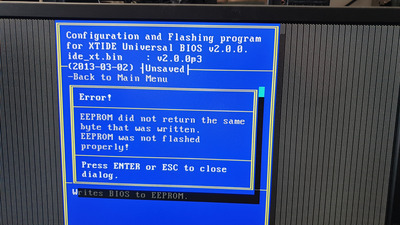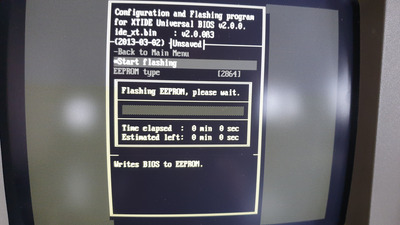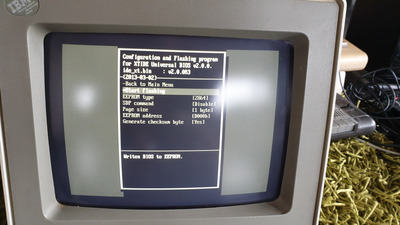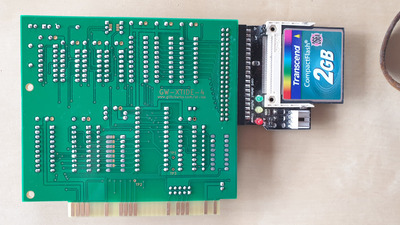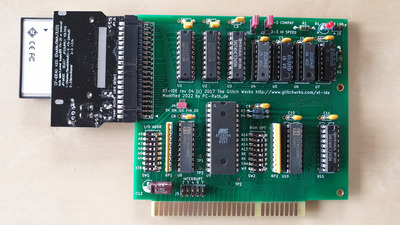Then perhaps the issue is with the hardware. What did you buy, exactly? A kit or an assembled and tested device? Who supplied the chips?
I see you are using HC688 instead of HCT or ALS which might be a problem. The ROM seems to work but one of these 688 decodes ROM address and the other is for I/O ports for IDE. Could be one is just barely working and the other is not. At the very least try swapping them places but preferably get HCT or ALS chips as is required by ISA bus.
The second possible issue is the smaller DL series chips you have there, I'm not familiar with these but L suggest low power series and the circuit needs fast S chips here. This is a pretty important difference, the timing chain here is critical for correct IDE operation (there was even a change from rev3 to rev4 because of a small timing issue in this chain). So both '04 should be of faster series, S or ACT (HCT will probably be too slow), certainly not L.
The DS8205 is an old RFT brand 1 of 8 decoder, kinda like the '138 which the original design has, but I'm not sure about it's speed rating. S would suggest it's fast but if the replacement of the other chips doesn't help then also replace this one with HCT138.
First replace U6 (DL004D) with something much faster. Original design wants S04, but ALS or ACT should do as well. U4 should also be a faster chip but it's mostly doing delays so perhaps L is not a problem here. Still, I would buy another fast '04 for replacement because the original design used S04 here as well.
If replacing these doesn't help then replace U8 and U10 for HCT series 688. If still nothing try replacing DS8205 with HCT138. After that I'm out of ideas, you'd need to make sure the PCB is correctly assembled and start probing it with a scope or logic analyzer to figure it out.
EDIT: The DL032D should also be replaced, it's less critical but I doubt L series is fast enough. Seems like LS or HCT will do fine. This should be done along with replacing the '04 chips.
